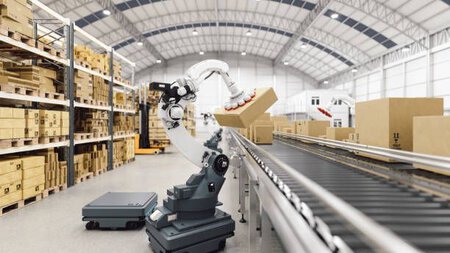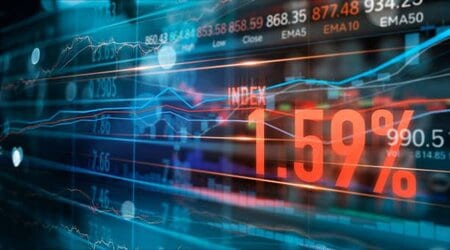The Performance Economy

Consumer behavior is the cornerstone of economic demand. This demand-type microeconomic comportment shapes the basic economic system that exists in the contemporary world. Consumption goods constitute a substantial proportion of economic activity. Therefore, it is important for businesses to understand the fundamental drivers in order to support the creation of a sustainable economy naturally, free of state tax substitutes and mandates from supernational entities.
For the last decades, the economies of many industrialised countries have been characterised by a combination of continuously high resource consumption with related high waste volumes, of rising public debt often accompanied by persistent unemployment and slow economic growth. Performance economies are built on sustainability by allowing the efficient use of existing resources and embracing product-use extension over the fast replacement of products. The natural resources are finite while the demand is increasing. The trajectory has spearheaded a move to the service economy, guided by a paradigm shift from industrialization and manufacturing to services. The role of technology, especially artificial intelligence and blockchain, is critical in providing improved security, increased efficiency, enhanced transparency, better traceability, and reduced cost. The modern economy is characterized by the shift from quantity and price sensitivity into servicisation, product quality, sustainability, and product ownership, which guides any country’s success.
Performance Economy
The current performance economies rely on blockchain technology, artificial intelligence, sock market, and Q & Q stocks to drive servicisation and the natural economy. Markets are growing beyond the material economy and consumption-driven concept. Therefore, it is essential to shift from industry-driven and material consumption and embrace sustainability. The shift can be successfully executed through the creation of products that last for a long time. Besides, capital owners should maintain ownership while the returns on capital ownership ought to be adjusted to realize sustainable economies. Achieving economic growth naturally needs a critical adherence to sustainability practices that revolve around re-use, recycle, and reduce (Gelbmann and Hammerl 52). Particularly, the concept of clean water, sustainable energy, and sanitation play an important role in the process.
Contribution of Circular Economy to Performance Economy
The circular market economy creates an avenue for the capitalist system of the economy to thrive. Consequently, it achieved significant success for a few capitalists but with little regard for the general welfare. Under a circular capitalist system and open market, where little intervention on production is involved, the value of ecosystem and biodiversity is consistently undervalued. However, generational equity is hardly achieved where minerals, water, and the ecosystem are exploited for the short-term benefit without compensation for future sustainability (Staheel 2). Performance economy is built on resource use efficiency and policy frameworks that promote labor as a resource, personal sustainability in the process, and the general will of key sector players in building a sustainable economy (Nygård 7). Geissdoerfer et al. provide the approaches that private sector players in the circular economy should embrace to promote sustainability through business models that are guided by principles of re-use, repair, recycle and remanufacture as opposed to replace (759). Labour, as human capital, is a critical element in the new business models that seek to promote sustainability. For instance, technological advancement, including the expertise use of artificial intelligence, blockchain technology, and smart assistance, are critical aspects in improving efficiency. Businesses train their employees on new technology of production, how to remain environmentally efficient, and the effectiveness of converting resources into profit for the realization of short-term and long-term sustainability (Huang and Rice 479). At a time when the production and businesses environment is dynamic, the role of human resources is paramount to achieving the needed sustainable productivity. Imparting new skills to employees improves their efficiency and reduces wasteful production.

A circular economy seeks to achieve stock optimization and profit maximization. The three loops of production and the service-life extension result in significant benefits to companies and organizations. Stock optimization and service economy have gained further popularity over value-added production because capital owners have an opportunity to create value by extending the useful life of the capital asset rather than increasing the assets through use and replacement. Therefore, the utilization value replaces the product and exchange value as the cost of input in the latter is higher, but it takes a relatively long time to depreciate (Cooper 33). The shift to the extension of the useful life is backed by a sustainable society, mainly because the world’s resources are becoming progressively finite (Moreno et al. 78). Moreover, the increasing role of private sector developers with the new business model based on the 3R principles of re-use, recycle, and remanufacture has proved vital to the current economy. The move has enabled manufacturers to realize more utility from extended use of resources and stock optimization than they would receive in low-quality products. The new business model is important for sustainability because the useful life of a product determines its replacement speed and the rate of use of the resources (Stahel 5). The level of consumption of natural resources is directly proportional to the amount of waste production. Therefore, extending the useful life of means of production promotes sustainability and reduces waste. Therefore, the current performance economy seeks to naturally support the economy through product-life extension rather in place of a fast replacement approach. Product life extension increases wealth. On the other hand, shortening the life cycle upsurges the demand for replacement escalates the rate of natural resource utilization, and leads to increased waste (Kjaer 22). The growing importance of the new business model based on circular economy finds innumerable opportunities in every sector’s activities such as repair, re-use, recycle, and reconditioning. It is applicable mainly in manufacturing, finance, and research and development.
The Role of Artificial Intelligence and Blockchain Technology
Artificial intelligence and blockchain technology are instrumental in improving the resilience of the world economies in the face of pandemics and resource depletion. The shift towards a service economy and stock optimization is expected to propagate with the support from new technology. Particularly, blockchain and artificial intelligence can increase the speed of access to new markets new ways of production and stimulate productivity. The contribution of blockchain technology in keeping data secure in the service economy is paramount. The financial segment and stock market sector advance when private sector players are assured of the security of their investment. Blockchain and artificial intelligence provide security through authentication and facial identification (Ramadoss et al. 57). In addition, blockchain has enabled financial inclusion by reducing the cost of transactions and improving the speed with which many players in the economy access financial services. The era of new and advanced technology is necessary for natural economy performance based on the service economy to grow. Therefore, blockchain and artificial intelligence are critical in enabling the shift from the fast-replacement production to the new product- life extension and service economy, which is more sustainable than the traditional system due to the finite nature of natural resources.

As the world marks a significant economic paradigm shift, blockchain and artificial intelligence offer solutions to existing problems. The advantages of these new technologies cannot be overlooked if an economy is to achieve a complete change towards a service economy, extended life products, and stock optimization. Specifically, blockchain technology offers improved security, increased efficiency, greater transparency, traceability, and reduced costs (Swan 125). Artificial intelligence and blockchain technology combine to effectively provide economical solutions and upgrade supply chain, financial inclusion, health records, and even medical royalties critical in the service economy (Marwala and Xing 25). Artificial intelligence specifically supports blockchain by facilitating decentralized blockchain infrastructure and verifying authenticity. Thus, artificial intelligence and blockchain work collaboratively to enable the service economy to perform naturally, guarantee sustainability, and promote economic viability for future generations.
The blockchain economy is taking over fiat and monetary systems. The technology facilitates exchange between distant players guided by equality of ownership shared governance among members. Blockchain and artificial intelligence are the centers of the new performance economies. They break border barriers and allow transactions between people in different countries at low costs and a fast rate. Artificial intelligence promotes trust by providing authenticity to transactions and eradicating the involvement of third parties in international trade and transactions.
The use of artificial intelligence, blockchain technology, and smart assistance has changed the way nations seek to promote natural growth. Furthermore, globalization and the growth of an open market economy have reduced the international boundaries in trade and what countries do to gain the balance of trade. As such, nations are finding it increasingly difficult to grow by themselves, especially given the rise in the international supply chain. Competitive advantage in production plays a significant role in what countries produce and how they balance their foreign exchange. The cutthroat competition and globalization have led to a new concept of sustainability that economies embrace to remain competitive in the going concern. For instance, a significant paradigm shift from industrialization to the service economy seeks to promote stock management over asset ownership to reduce the preference of quantity products over quality, which can last for long and guarantee a return on investment to the capital owners.
Conclusion
Performance economies seek to promote sustainability by allowing the efficient use of present resources. The product-life extension of fast-product replacement is encouraged as it leads to a lower rate of resource utilization and relatively low waste during production. Therefore, traditional means of production, where resources such as land, labor, and minerals were made for short-term use, are being replaced with products that take reasonably long to wear out or replace. The concept of stock optimization has evolved over time. Besides, the role of technology and the contribution of research and development in the performance economy cannot be overstated. The technology gained from research and development may not benefit the economy in the short term, but it contributes to economic growth in the long run. Research into new production methods, better products, and waste management play a key role in promoting sustainability, given the limited resources. Blockchain and artificial technology are now at the center of the service economy. Overall, they offer improved security, increased efficiency, greater transparency, better traceability, and reduced costs.
References
Cooper, Tim. “The Significance of Product Longevity.” Longer Lasting Products. Routledge, 2016.
Geissdoerfer, Martin et al. “The Circular Economy – A New Sustainability Paradigm?”. Journal of Cleaner Production, vol 143, 2017, pp. 757-768., doi: 10.1016/j.jclepro.2016.12.048.
Gelbmann, Ulrike, and Barbara Hammerl. “Integrative Re-Use Systems as Innovative Business Models for Devising Sustainable Product–Service-Systems”. Journal of Cleaner Production, vol 97, 2015, pp. 50-60., doi: 10.1016/j.jclepro.2014.01.104.
Huang, Fang, and John Rice. “The Role of Absorptive Capacity in Facilitating “Open Innovation” Outcomes: A Study of Australian SMEs in The Manufacturing Sector”. International Journal of Innovation Management, vol 13, no. 02, 2009, pp. 201-220., doi:10.1142/s1363919609002261.
Kjaer, Louise Laumann et al. “Product/Service‐Systems for A Circular Economy: The Route to Decoupling Economic Growth From Resource Consumption?”. Journal of Industrial Ecology, vol 23, no. 1, 2018, pp. 22-35., doi:10.1111/jiec.12747.
Marwala, Tshilidzi, and Bo Xing. “Blockchain and artificial intelligence.” arXiv preprint arXiv:1802.04451, 2018. doi:10.48550/arXiv.1802.04451
Moreno, Mariale et al. “A Conceptual Framework for Circular Design”. Sustainability, vol 8, no. 9, 2016, p. 937., doi:10.3390/su8090937.
Nygård, Håvard Mokleiv. “Achieving The Sustainable Development Agenda: The Governance–Conflict Nexus.” International Area Studies Review, vol. 20, no.1, 2017, p. 3-18.
Ramadoss, Tamil Selvan, Hilaal Alam, and Ramakrishna Seeram. “Artificial Intelligence and Internet of Things Enabled Circular Economy.” The International Journal of Engineering and Science, vol. 7, no. 9, 2018, pp. 55-63.
Stahel, Walter. “The Business Angle of a Circular Economy–Higher Competitiveness, Higher Resource Security and Material Efficiency.” A New Dynamic: Effective Business in A Circular Economy, vol.1, 2013.
Swan, Melanie. “Blockchain for Business: Next-Generation Enterprise Artificial Intelligence Systems.” Advances in Computers. vol. 111, 2018, pp. 121-162.
Authors